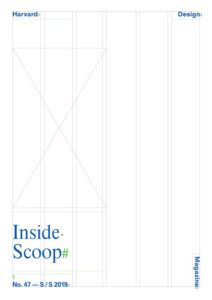Taking Hold
Deliberate and completely appropriate that the architectural theorist and historian Mark Wigley should have composed the initial version of “Whatever Happened to Total Design?” for a conference at the Harvard University Graduate School of Design (GSD). The polemical query that serves as his title highlights a term that has gone underground in contemporary practice. Yet, in its account of the historical and theoretical aspects of “total design,” the essay strikes as an intellectual gift of sorts to a school that has continued—under the leadership of Dean Mohsen Mostafavi—to interrogate the collision and coalescence of architecture and design writ large, to roam freely between the scale of the building fragment and that of the globe, to explore vigorously all manner of crossover between departments and disciplines. The GSD continues to reckon, in other words, with the complicated legacy of the collaborative pedagogical model brought over by Walter Gropius in 1937. While the GSD was not ultimately destined to play the role of “decantation chamber of the avant-garde” the way, following Manfredo Tafuri, the Bauhaus had, it nevertheless remains provocatively moored to the demands and ambitions of total design.
Wigley’s definition of totality in architecture turns on a juxtaposition of implosion and explosion—an allusion to a physics of forces that translates into a set of attitudes and priorities for architects then and now: on the one hand, those inspired by the Wagnerian theatricality of the Gesamtkunstwerk tend to create “hyper-interiors” whose sensorialist and handcrafted overload gives suffocating intensity to domestic(ated) spaces; on the other hand, those who see architecture everywhere can embrace industrial reproduction (and, we infer, its segue into digital serialization) in order to launch design on a planetary scale. Over and against the cliché that implosion resists modernity while explosion celebrates it, the two stances are axiomatically interdependent, prompting a situation characterized by the way, according to Wigley, “relentless design work bursts out of its domestic confinement” to ripple across the world.
Hence, Joseph Maria Olbrich’s Secession Building (1898) is all at once a “sacred” temple sequestered from “profane” urbanism and a factory site in which the aesthetic object is readied as a prototype for mass production and distribution. Hence, too, modernism’s fascination with transparency blends the inside and the outside only to render manifest centripetal and centrifugal energies. Hence, finally, the various flowcharts of architectural movements devised by the postmodernist Charles Jencks totalize through image the pluralism he claims cannot, in fact, be totalized—this while photographs of his own intensely “thematic house” can grace the pages of Architectural Digest. This is total design, and its duality has never left us. Its Vitruvian roots (the architect as manager without expertise in any number of epistemological domains) announce Gropius’s conception of the architect as coordinator. The Renaissance treatise (foregrounding disegno as line, outline, drawing, plan, design, idea, ideal) then establishes the foundation for the sense that theory itself has an architectonic form. Wigley’s provocation in all of this? That what total design reveals is the psychological condition of the architect who desires the world but cannot ever take hold of it.
Erika Naginski is professor of architectural history at
the Harvard University Graduate School of Design.
